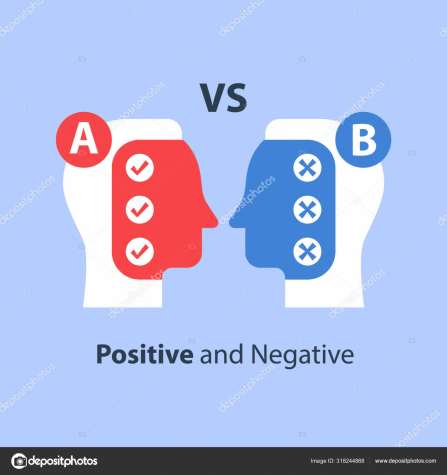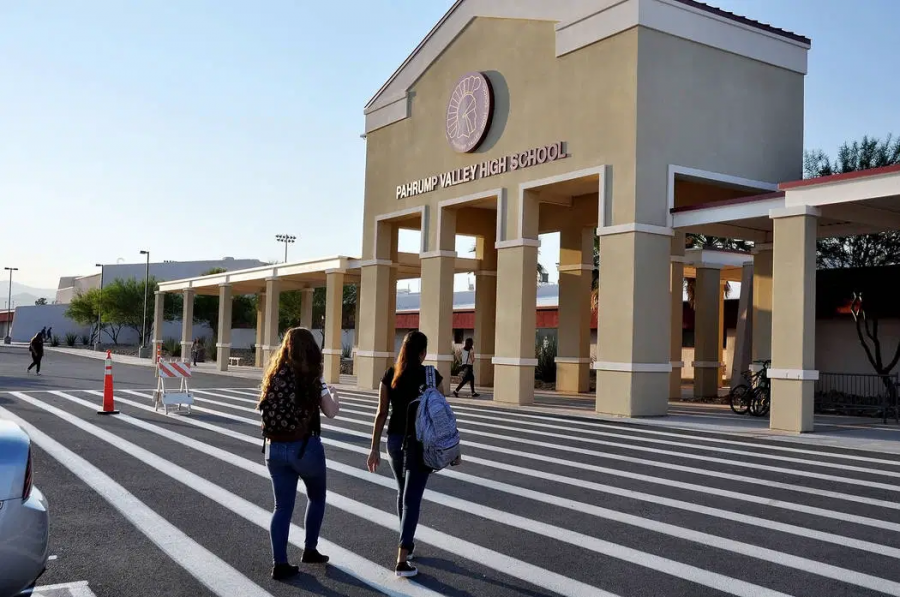Pahrump Valley High School’s Take on a Block Schedule
In this new 2021-2022 school year, Pahrump Valley High School has changed from its traditional schedule of classes to one similar to a block schedule.
Generally, there are five different types of block schedules. There is the 4×4 version which is the version our school used last year (2020-2021), and there is also the A/B schedule. The A/B version is nearly identical to PVHS’s current schedule in which there are four classes on an “A” day and four different classes on a “B” day. Then there is the trimester schedule, where instead of quarters and semesters there are three 12-week trimesters. Additionally, there is the “75-15-75-15” schedule which, according to The Glossary of Education Reform, “students take four 75-minute classes every day and finish courses in a semester, with each semester followed by an intensive 15-day learning-enrichment course or remedial program. Another variation is the “75-75-30” schedule, which uses only a single 30-day intersession rather than two 15-day intersessions.” Finally, there is the “Copernican” schedule where students have longer class times for core classes for one half of the day, and the other half is with shorter, usually elective, classes.

On the other hand, there is the traditional type of school schedule. In a traditional setup, there are between five to nine classes in one day in a week of five school days. Each class is allotted the same amount of teaching time and the classes are in the same order every day.
This year at Pahrump Valley High school, we have a new schedule. In our schedule, we have a mixture of traditional and A/B block schedules. On Mondays, students attend all seven classes–minus study hall–for about 50 minutes. Then, on Tuesdays and Thursdays, or the “A” day, students attend their first, second, and sixth classes, with a study hall before the sixth period. On Wednesdays and Fridays, the “B” day, students have their third, fourth, fifth, and seventh periods.
After asking both students and teachers, it seems that the school is generally doing well with the new schedule, although many think that the setup is odd or unusual. One student who was asked, Anthony Luca, said that he enjoys the longer classes and the time it gives him to get work done before the end of class. Likewise, another student, Bobbie Joslyn says that “longer class time is great since you have more time to get stuff done… [such as] in culinary with the longer class period we actually have time to cook stuff without rushing.”
Going back, Anthony also feels, like many others, “that Monday’s [schedule] should be Friday’s schedule.” If set up like this, students would be able to have all of their classes before the weekend, helping them remember anything from homework over the weekend to the week’s lessons.
Many students who take more difficult classes like honors seem to better appreciate the study hall period on “A” days, while other students and many teachers feel that it is a waste of time. For example, Mr. Norton, chemistry, physics, and physical science teacher, says, “there is no need for it to be this long,” and that “students do not take advantage of it.” For the students who do take advantage of this period, it is helpful as it “lets me do some work” (Anthony Luca) and it allows students time “so we can study for tests,” (Bobbie Joslyn).
Another change to the school’s schedule is the slightly later start and end times. It has allowed some to sleep in, but not by much. Mr. Norton on this says that it is “Not late enough in my opinion. We should have the elementary start time. Firstly, high school students tend to be up later for reasons that span from bad decision making to working, either way, when they stay up late, as they do, it’s better to start later and research has proven that time and time again. Secondly, high school students have the ability to stay at home with younger siblings in the morning or even drop them off at school if they have their licenses. As it stands right now, I have an elementary-age child that is at home by himself for 2 hours because both parents work and older siblings are at school. Such a huge oversight and a simple solution to a big problem in the community. As far as after school, we have the S.A.F.E. program to cover that time for the elementary age. It also allows for fewer students on the busses if older siblings are driving them.” While there is the issue of elementary school children being home alone, one upside is that there is more wiggle room for busses with the start and end times being farther apart from the middle school and the elementary schools.

While there are many mixed feelings about the new schedule, there are many good things about it. It gives students and teachers more time for education, it gives more time between classes to get homework done, and it allows for in-school study time. Much research shows that both students and teachers eventually grow accustomed to new schedules, and I doubt that our school will be any different.







Yanira Hermoso • Oct 20, 2021 at 10:14 AM
I really love how you have the whole article formatted and how much detail it has in it. we can hear from both sides equally and understand what it is trying to imply. It’s a very good article.
Abril Briseno • Oct 20, 2021 at 10:13 AM
Your article is very well put together! Transitions from ideas were all very smooth and everything fit together perfectly. The first paragraph in which you explained the different types of block schedule may be a little too detailed and has the potential to lose readers but besides that everything sounds great!
Liv • Oct 20, 2021 at 10:12 AM
Very well written! Including the part about student’s wanting Friday’s and Monday’s schedule to be the same as it would be helpful to remember any over the weekend homework assignments was a nice touch.